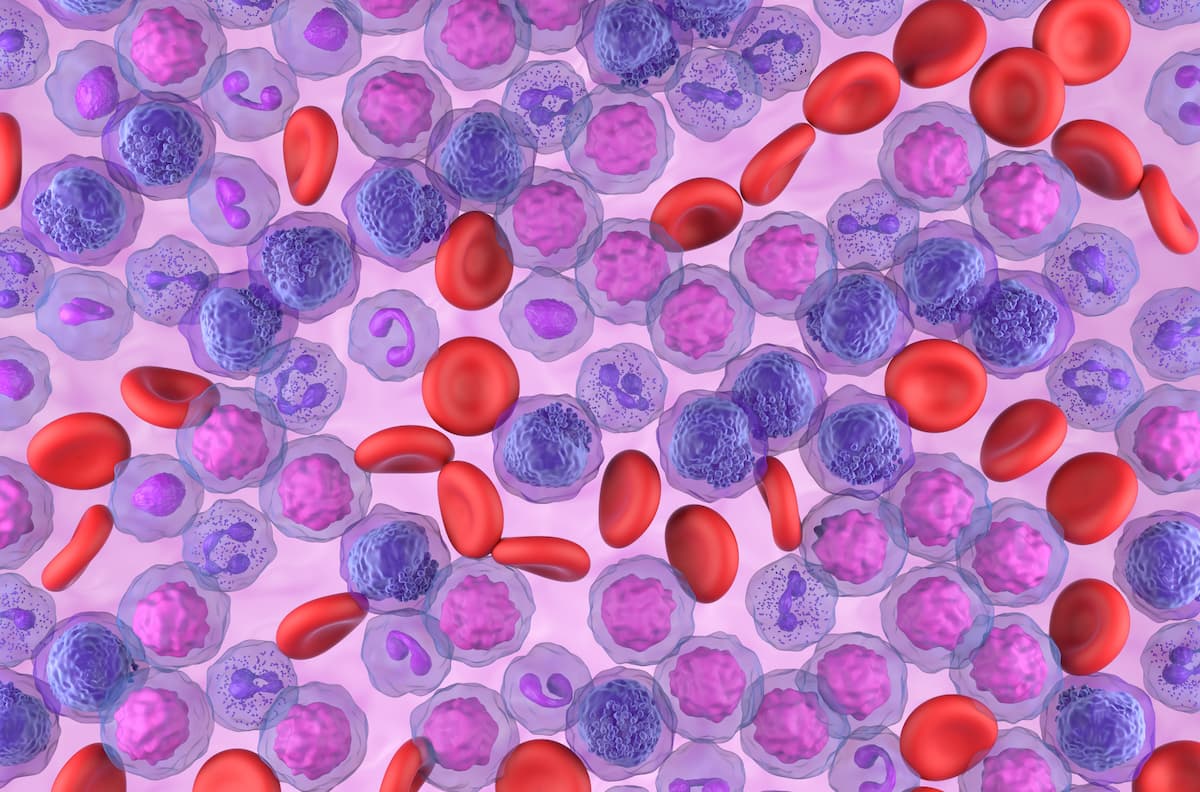Uproleselan Does Not Reach OS End Point, Shows Select Efficacy in AML
Phase 3 data show meaningful benefits with uproleselan in patients with primary refractory AML and post-transplant survival.
"While the study did not meet the primary endpoint of overall survival, the findings show clinically meaningful benefits in primary refractory AML and post-transplant survival, suggesting that uproleselan has the potential to improve outcomes in this challenging population," according to study author Daniel J. DeAngelo, MD, PhD.

Although uproleselan (GMI-1271) did not meet the primary end point of overall survival (OS) across the intent-to-treat (ITT) population, the agent may elicit efficacy among specific subgroups of patients with relapsed/refractory acute myeloid leukemia (AML), according to data from an international phase 3 trial (NCT03616470) presented at the 2024 American Society of Hematology Annual Meeting & Exposition (ASH).
At a cutoff date of March 31, 2024, and a median follow-up of 37.9 months, the median OS for the ITT population was 13.0 months among those in the uproleselan arm (n = 194) vs 12.3 months in the placebo plus chemotherapy arm (n = 194; HR, 0.89; 95% CI, 0.69-1.15). This difference was not statistically significant (P =.39). However, OS survival probabilities at 48 months were 34.1% for the uproleselan group and 25.5% for the placebo group.
Despite not meeting the primary OS end point, uproleselan showed encouraging results in certain subgroups, particularly for patients with primary refractory AML, who experienced a survival advantage.
“Unfortunately, this large international phase 3 study did not meet its overall primary end point of overall survival. However, I think there are some clinically meaningful benefits observed in the uproleselan arm across multiple predefined subgroups,” explained Daniel J. DeAngelo, MD, PhD, chief of the Division of Leukemia at Dana-Farber Cancer Institute, during a presentation of the data.
Patients with primary refractory AML, which consisted of 33% of enrolled patients, had a substantial benefit from uproleselan. The median OS in this patient population was 31.2 months with uproleselan (n = 62) vs 10.1 months with the placebo arm (n = 66; HR, 0.58; 95% CI, 0.37-0.91).
The survival benefit was consistent regardless of the chemotherapy backbone used. For patients treated with fludarabine, cytarabine, idarubicin (FAI) chemotherapy combined with uproleselan, the hazard ratio was 0.53 (95% CI, 0.30-0.93), indicating a survival advantage. For those treated with mitoxantrone, etoposide, cytarabine (MEC) chemotherapy plus uproleselan, the hazard ratio was 0.68, suggesting a trend toward benefit; however, the upper end of the hazard ratio confidence interval exceeded 1 (95% CI, 0.34-1.38).
Study Design and Patient Characteristics
Uproleselan is an E-selectin antagonist that works by disrupting AML cell survival pathways and overcoming chemotherapy resistance.1 The agent can potentially deepen chemotherapy response.
This trial enrolled 388 patients aged 18 to 75 years, with either primary refractory AML or first or second relapse. Patients were required to be eligible for intensive salvage treatment. Of the 388 enrolled, 385 were dosed at 59 sites in North America, Europe, and Australia.
Once enrolled, patients were randomly assigned to receive uproleselan with chemotherapy or chemotherapy alone, with MEC or FAI as the chemotherapy backbone, based on investigator choice. Uproleselan was administered during the induction phase and continued through up to 3 cycles of consolidation, with the option of proceeding to transplant.
The median age of those enrolled was 58 years (range, 20-79 years), approximately 50% (n = 207) of the patients were male, 76% were White, and most patients (92%) had an ECOG score of 0 or 1. The baseline disease status was well-balanced between arms, with about 33% of patients having primary refractory AML. This was defined as failure to achieve a complete remission (CR) or complete remission with incomplete hematologic recovery (CRi), or relapse within 3 months if remission was achieved.
The primary end point was OS. Key secondary end points were severe oral mucositis during induction, CR, and remission rates.
Additional Findings
The median duration of response (DOR) among the uproleselan-treated primary refractory patients was not reached, compared with a median DOR of 12.7 months in the placebo group (HR, 0.26; 95% CI, 0.09-0.75).
Minimal residual disease (MRD) status at the end of induction was a key secondary end point of the study. In patients who achieved CR or CRi, uproleselan showed a higher rate of MRD negativity. Among patients achieving CR, 67.1% of those treated with uproleselan were MRD-negative vs 61.5% in the placebo group.
Further, over 50% of patients in both arms underwent allogeneic stem cell transplantation (allo-SCT) after treatment. Notably, patients who underwent transplantation experienced a marked survival benefit when treated with uproleselan. Of those who achieved CR and proceeded to allo-SCT, the median OS was not reached (NR) for the uproleselan group compared with 24.8 months for the placebo group (HR, 0.59; 95% CI 0.38-0.91). The 5-year survival probabilities for transplanted patients were 57.5% in the uproleselan arm vs 27.7% in the placebo arm.
Looking at safety, there was no increase in serious adverse events (AEs) or any grade 3 or higher treatment-emergent AEs observed with uproleselan. No discontinuations due to AEs were seen.
“There was no known CYP inhibition, QTc prolongation, or differentiation syndrome seen in this study. The safety profile was consistent with what we expect from the chemotherapy backbone, with no significant differences,” explained DeAngelo, sharing that uproleselan did not add any extra toxicity to the chemotherapy backbone.
“While the study did not meet the primary endpoint of overall survival, the findings show clinically meaningful benefits in primary refractory AML and post-transplant survival, suggesting that uproleselan has the potential to improve outcomes in this challenging population,” added DeAngelo.
Reference
DeAngelo DJ, Schuh AC, Jonas BA, et al. Efficacy and safety of uproleselan combined with chemotherapy vs. chemotherapy alone in relapsed/refractory acute myeloid leukemia: Findings from an international phase 3 trial. Blood. 2024;144(suppl 1):733. doi:10.1182/blood-2024-198104
Newsletter
Stay up to date on recent advances in the multidisciplinary approach to cancer.